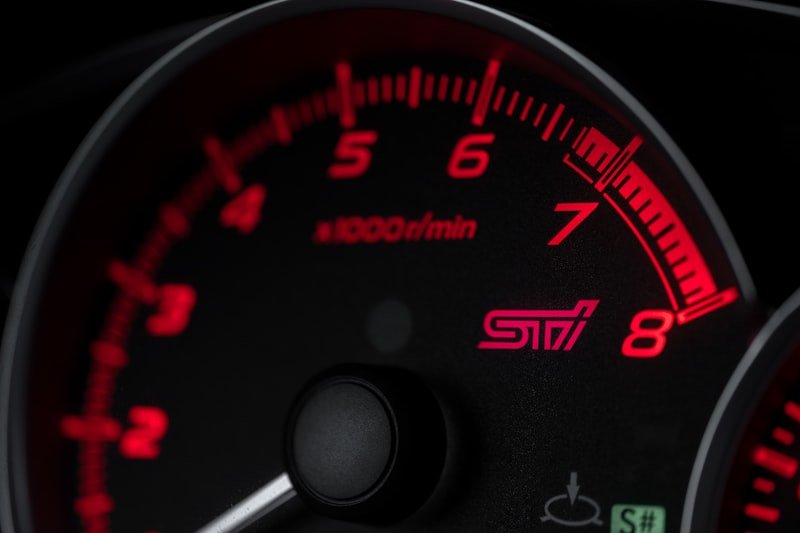Have you ever experienced that dreaded moment when your car’s check engine light suddenly illuminates? It’s as if your vehicle is trying to communicate with you, but in a language you don’t understand. Fear not, for today we delve into the realm of automotive diagnostics with a focus on the enigmatic P2229 code.
So, what exactly is the P2229 code? Well, it’s an OBD-II diagnostic trouble code that indicates a problem with the barometric pressure sensor circuit in your vehicle. This sensor plays a crucial role in monitoring the atmospheric pressure, which helps the engine control module (ECM) adjust the air-fuel mixture for optimal performance. When this code appears, it means there is an issue with the sensor’s signal or its circuit.
Imagine the barometric pressure sensor as a vigilant guardian, constantly observing the surrounding atmosphere. Like a weather forecaster, it provides valuable data to the ECM, enabling it to make precise adjustments to ensure your engine runs smoothly. However, if the sensor malfunctions or its circuit is compromised, it can lead to a variety of issues, including reduced fuel efficiency, rough idling, and even engine stalling.
Diagnosing the P2229 code requires a systematic approach. A qualified technician will utilize specialized tools to gather data from the sensor, checking for any abnormalities or inconsistencies. They may also inspect the wiring and connections, ensuring everything is in proper working order. Once the root cause is identified, appropriate repairs or component replacements can be undertaken to resolve the issue.
It’s important to note that ignoring the P2229 code can have detrimental effects on your vehicle’s performance and longevity. Just like seeking medical attention when you’re feeling unwell, addressing the underlying problem promptly can save you from more extensive damage down the road. So, the next time your check engine light flickers to life, embrace it as an opportunity to uncover the mysteries beneath the hood.
Decoding P2229: Unveiling the Secrets Behind This Automotive Diagnostic Trouble Code
Introduction:
Picture this: you’re cruising down the open road, wind in your hair, and suddenly, your check engine light blinks to life. Panic sets in as you wonder what could be wrong with your beloved vehicle. Don’t fret! We’re here to shed light on the mysterious P2229 diagnostic trouble code (DTC). In this article, we’ll decode the secrets behind P2229 and help you understand what it means for your car’s health.
Understanding P2229:
So, what exactly is P2229? Well, P2229 is a specific DTC that pertains to the barometric pressure sensor circuit in your vehicle. This code typically appears when there is an issue with the barometric pressure sensor or its circuitry. It serves as a crucial indicator for technicians, providing valuable insights into potential problems within your vehicle’s engine system.

Importance of Barometric Pressure:
To better comprehend the significance of P2229, let’s delve into the role of barometric pressure in your car. Just like how we need oxygen to breathe, your vehicle requires a precise balance of air and fuel mixture for optimal performance. The barometric pressure sensor plays a vital role in measuring the atmospheric pressure and ensuring the correct air-fuel ratio is maintained at all times. Any disruption in this delicate equilibrium can lead to engine malfunctions and reduced efficiency.
Common Causes of P2229:
Now that we know the importance of the barometric pressure sensor, let’s explore some common causes behind the P2229 trouble code. One possible culprit could be a faulty sensor itself, where it fails to accurately measure the atmospheric pressure. Additionally, damaged wiring or loose connections can interfere with the sensor’s signal transmission, triggering the P2229 code. Other factors such as vacuum leaks or clogged air filters may also contribute to this issue.
Effect on Vehicle Performance:
If left unaddressed, the P2229 code can have a significant impact on your vehicle’s performance. Your engine may experience reduced power, decreased fuel efficiency, or even difficulty starting. Ignoring this code could lead to more severe problems down the road, potentially causing damage to other engine components. Therefore, it is crucial to diagnose and resolve the underlying issue promptly.
Conclusion:
The P2229 diagnostic trouble code serves as a valuable clue when it comes to identifying potential issues with your vehicle’s barometric pressure sensor circuit. By understanding the causes and effects of this code, you can make informed decisions about necessary repairs and maintenance. Remember, regular check-ups and addressing any codes promptly can help keep your car running smoothly and ensure you enjoy many more carefree journeys on the open road.
P2229 Code: Troubleshooting Tips to Keep Your Vehicle Running Smoothly
Are you experiencing trouble with your vehicle? Don’t worry, we’ve got you covered! In this article, we will delve into the details of the P2229 code and provide you with valuable troubleshooting tips to keep your vehicle running smoothly. So, let’s get started!
The P2229 code is an OBD-II diagnostic trouble code that indicates a problem with the barometric pressure sensor circuit in your vehicle’s engine. This sensor plays a crucial role in measuring atmospheric pressure, which helps regulate various engine functions. When this code appears, it can lead to issues such as poor fuel efficiency, rough idling, or even engine stalling.
So, how can you troubleshoot this problem? Let’s find out!
-
Check for loose connections: Start by inspecting the wiring and connectors associated with the barometric pressure sensor. Ensure they are properly connected and free from any damage or corrosion. A loose or damaged connection could be the underlying cause of the P2229 code.
-
Examine the sensor: Carefully inspect the sensor itself for any signs of physical damage or contamination. Make sure it is securely mounted and not obstructed by debris. Clean the sensor if necessary, using specialized sensor cleaners that won’t leave residue.
-
Scan for additional codes: Perform a comprehensive scan of your vehicle’s onboard computer system to check for any other related codes. Sometimes, multiple codes can appear simultaneously, offering clues about the root cause of the problem.
-
Consult a professional: If the above steps don’t resolve the issue, it’s recommended to seek assistance from a qualified mechanic. They have the expertise and tools required to diagnose and fix complex engine problems accurately.
Remember, addressing the P2229 code promptly can prevent further damage to your vehicle and ensure optimal performance. By following these troubleshooting tips and seeking professional help when needed, you can keep your vehicle running smoothly and enjoy a safe driving experience.
The P2229 code can be a cause for concern but understanding how to troubleshoot it is crucial. By checking connections, inspecting the sensor, scanning for additional codes, and seeking professional help if necessary, you can effectively resolve this issue. So, stay proactive in maintaining your vehicle’s health and enjoy a smooth ride every time!
From Mystery to Mastery: Understanding and Resolving the P2229 Code
Have you ever experienced the frustration of seeing a mysterious code appear on your vehicle’s dashboard? One such code that often perplexes car owners is the P2229 code. But fear not! In this article, we will unravel the mystery behind this code and provide you with essential information to help you resolve it like a pro.
So, what exactly does the P2229 code mean? Well, this code is specific to the pressure sensor circuit of the barometric pressure (BARO) sensor. The BARO sensor plays a crucial role in determining the atmospheric pressure surrounding your vehicle. It provides vital data to the engine control module (ECM), aiding in the proper air-fuel mixture calculation for optimal engine performance.
When the ECM detects an abnormal voltage reading from the BARO sensor’s circuit, it triggers the P2229 code. This could indicate a range of possible issues, such as a faulty sensor, damaged wiring, or even a problem with the ECM itself. Understanding the underlying cause is vital in resolving the code effectively.

Resolving the P2229 code requires a systematic approach. Here are some steps you can take to diagnose and fix the issue:
-
Inspect the sensor and wiring: Start by visually examining the BARO sensor and its connecting wires. Look for any signs of damage, corrosion, or loose connections. A simple fix like tightening a loose wire could potentially resolve the issue.
-
Test the sensor: You can use a multimeter to measure the sensor’s voltage output. Compare the readings with the manufacturer’s specifications to determine if the sensor is functioning correctly. If the readings are out of range, the sensor may need to be replaced.
-
Check the wiring harness: Carefully inspect the wiring harness for any signs of wear or damage. Damaged wires can cause erratic voltage readings, triggering the P2229 code. If necessary, repair or replace the affected wiring.
-
Consult a professional: If you’re unable to identify the problem or lack the necessary tools and expertise, it’s advisable to seek assistance from a qualified mechanic. They have the knowledge and diagnostic equipment to pinpoint the exact cause of the issue.
By following these steps, you can transition from being puzzled by the P2229 code to mastering its resolution. Remember, taking prompt action when faced with a diagnostic trouble code is essential to prevent further damage and ensure your vehicle stays in optimal condition.
The P2229 code relates to the BARO sensor circuit and signifies a potential issue with atmospheric pressure measurement. By understanding the code’s meaning and following the suggested steps for diagnosis and resolution, you can confidently address the problem and get back on the road with peace of mind.
Unraveling P2229: How Modern Technology is Revolutionizing Car Diagnostics
Are you tired of the hassle and uncertainty of car diagnostics? Worry no more, because modern technology is here to revolutionize the way we diagnose car problems. In this article, we’ll delve into the intriguing world of P2229 and how it’s unraveling new possibilities for efficient car diagnostics.
But first, what exactly is P2229? Well, it’s a diagnostic trouble code that relates to the barometric pressure sensor circuit in your vehicle. This sensor plays a crucial role in measuring atmospheric pressure and providing essential data to the engine control module. When there’s an issue with this circuit, it can lead to performance problems and trigger the dreaded Check Engine Light.
Now, let’s explore how modern technology is transforming the landscape of car diagnostics. Gone are the days when mechanics had to rely solely on their experience and intuition. With the advent of advanced scanning tools and diagnostic software, identifying and resolving car issues has become remarkably precise and efficient.
One remarkable innovation is the OBD-II (On-Board Diagnostics) system, which has become a standard feature in most vehicles manufactured after 1996. This system monitors various aspects of your car’s performance and generates diagnostic trouble codes like P2229 when something goes awry. These codes act as valuable clues, guiding technicians towards the root cause of the problem.
Furthermore, cloud-based diagnostic platforms have emerged, allowing mechanics to access a vast database of diagnostic information and troubleshooting tips. Collaborative online forums and communities also enable them to seek advice from experts worldwide, fostering a collective pool of knowledge.
Imagine a scenario where your Check Engine Light illuminates, and you’re unsure about the underlying issue. With modern technology, you can connect an OBD-II scanner to your car’s diagnostic port and retrieve the specific trouble code, such as P2229. You can then input this code into a diagnostic app or software, instantly gaining insights into potential causes and recommended solutions.
The advent of modern technology has revolutionized car diagnostics by empowering both mechanics and car owners alike. The ability to decode diagnostic trouble codes like P2229 and access a wealth of information has simplified the process of identifying and resolving car issues. Embrace this technological marvel and bid farewell to the days of uncertainty and frustration in car repairs.
